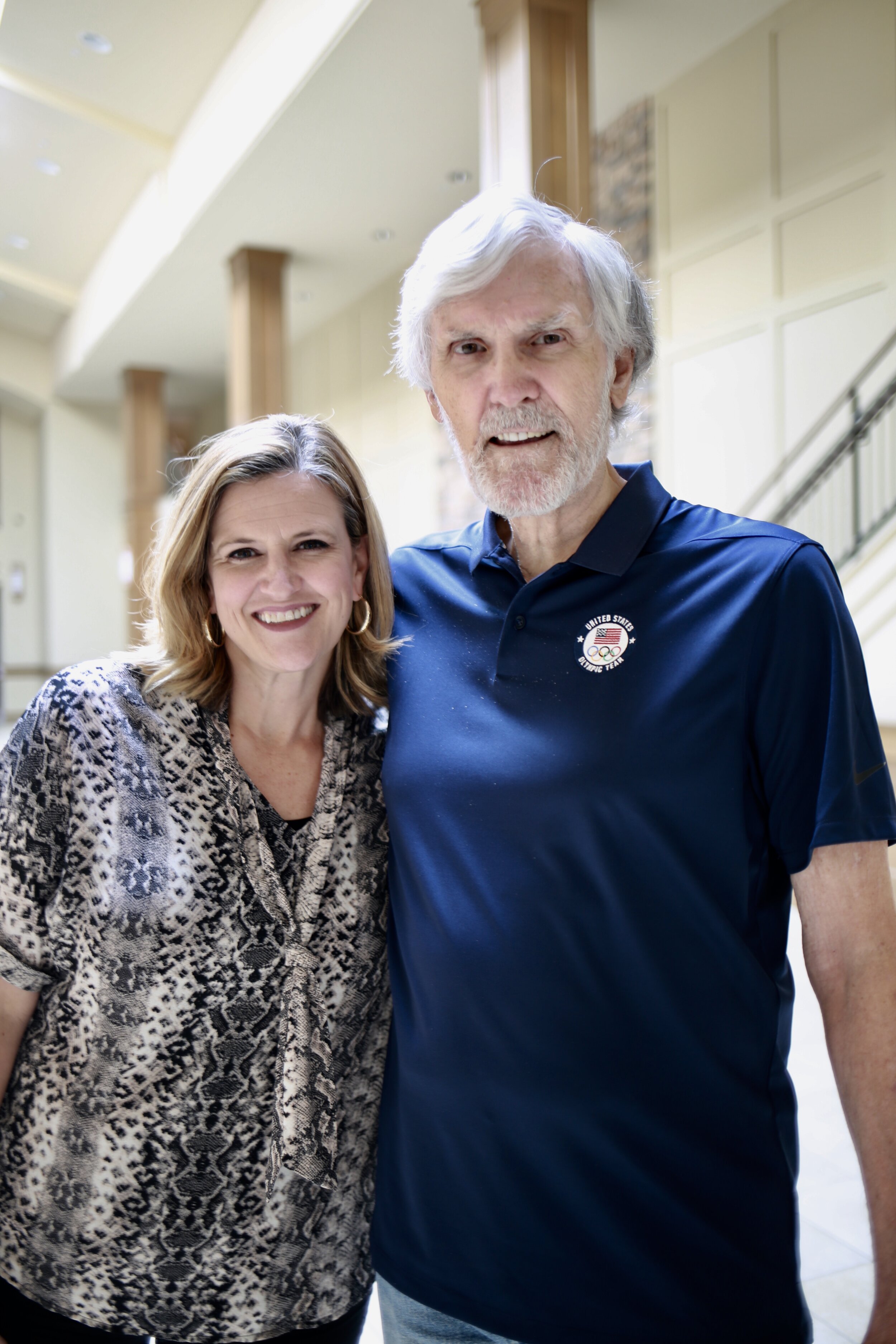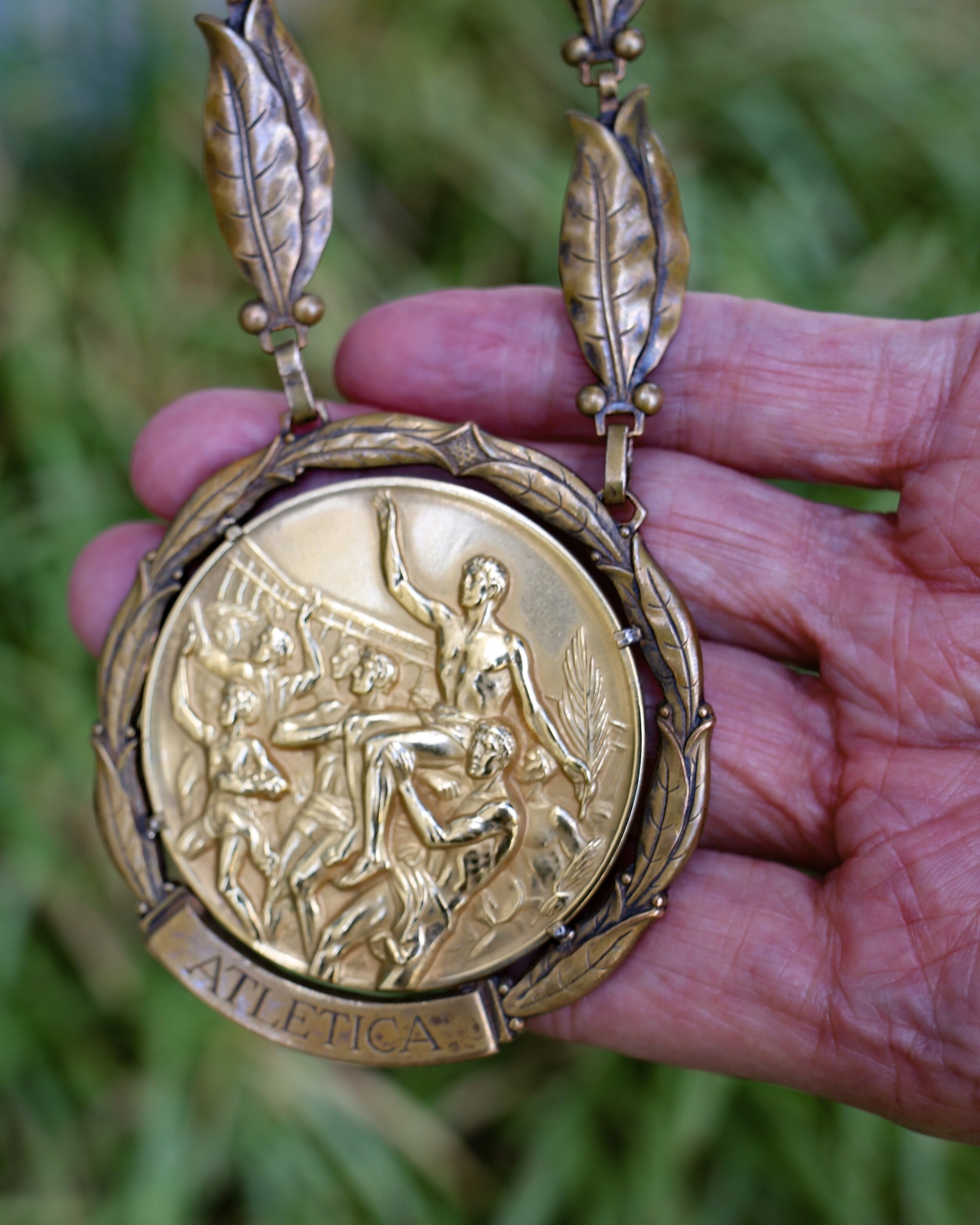Published November 5, 2019 at 11:24am.
Interview and photos by Jan Osborn.
November is National Marrow Awareness Month. November is used as a time to generate awareness of the network of donor centers around the nation and encourage more people to donate. I had never paid attention to bone marrow transplants until I recently heard Earl Young speaking about how his bone marrow donor saved his life. If the name Earl Young sounds familiar, it is because Earl at the age of 19, competed at the 1960 Olympics and won a gold medal in the 4 × 400 m relay setting a new world record at 3.02.2. He finished sixth in the 400 m, in a time of 45.9 s that matched the former Olympic Record. At the 1963 Pan American Games Young won gold medals in both 4 × 100 m and 4 × 400 m relays. Seven years ago at the age of 71, Earl visited his doctor for a nagging cough. During that checkup, Earl learned that he had leukemia and probably only three months to live. I visited with Earl a couple of weeks ago to learn more about his battle with leukemia and how he started a foundation with the primary goal of defeating blood cancer through donor awareness.

Ed Young running in the 1960 olympic games.
When did you realize you were a gifted runner, and how did that lead to your spot on the 1960 Olympic team?
The story is that when I was born my dad told the doctor, there’s my quarter-miler. Dad had been a runner in high school. He could have been a world class athlete, no question had he had the good fortune to go on to college. But he had to go to work and didn’t have the opportunity that I had. I’ve always thought he could have been better than me because he was tougher than me. I can still remember one day in Little League when the coach said for all of us to go out to centerfield and race back to home plate. I remember dad saying, “here’s where my son shines.” His approval was always important. Likewise, there is a certain pride you have in stepping up on that Olympic podium and see your flag go up and hearing your national anthem. That Little League moment is exactly what went through my mind at that time. My family, my school, my friends, my country all are in your thoughts at such a time.
How did your Olympic training and healthy lifestyle help when you were diagnosed with leukemia?
When I was diagnosed I was told the only cure was a bone marrow transplant. In December 2011, a donor was found. She was a perfect match—except for one thing—she lived in Germany. The stems cells in her blood were drawn on a Thursday morning in Dresden, Germany. They were raced to Medical City Hospital in Dallas and began flowing into my body. The Transplant date was Jan 21, 2012.
My oncologist says he believes there is no question that my athletic background helped bring me through the ordeal. Athletes tend to push through rough times, and they’ve experienced tiredness and pain. It’s just a mental toughness that athletes tend to develop to be at a world class level. There’s a toughness that you develop with it. That toughness was part of my recovery. It’s actually part of my personality that keeps me striving today. There’s no day where I say, wow, this is wonderful. There’s always that lingering tiredness that goes with having a bone marrow transplant. It’s always attacking my body. The worst I feel is when I wake up in the morning. But it tends to get better and a cup of coffee makes it feel better. Two cups makes it feel even better.
I try to exercise; however, with what I’ve done in my life, it’s hard for me to classify it as exercise. Every other day I do 30 minutes on a stationary bike and some stretching. It’s part of the way you stay alive.
The doctors told me that somewhere along the line they were counting on my athletic background as part of my recovery. I can look back and tell you that it is the toughest thing I’ve ever done. Just staying alive. You have to want to stay alive. It’s a rough experience. Recovery is tough. And then I wasn’t doing it at 21. I was doing it 71.
Earl Young with Stacy Losher. Stacy’s daughter, Madison, was a match for an infant last year.
Tell me how you started the Earl Young Foundation.
Recovery is just absolute hell. During the recovery I became aware that only 4 out of 10 people who can have extended life through a bone marrow transplant, actually find a match. That means that there are 6 people out of 10, right now in this country, wondering if they’ll find a match, and 6 won’t find a match.
Simply said, they are condemned to death because their donor is walking down the street, unaware that they could save a life. It’s as simple and as horrible as that. God made our bodies in such a way that now science has progressed to the point to where we understand that we can put our stem cells/bone marrow into a matching person and give them life. You don’t have to jump into a foxhole or run into a burning house to save a life. Just share your DNA. I began thinking about how could I help? I got to thinking about the gold medal and Abilene Christian University which has been so important to my life and how the students there could become donors. Of course, the Olympic Gold Medal happened while I attended school there.
In 2015, I contacted DKMS (German “Deutsche KnochenMarkSpenderdatei” or “German Bone Marrow Donor File”), a charity that works in the areas of blood cancer and hematopoietic stem cell transplantation based in Tübingen, Germany. It is the largest and oldest of the organizations in the world, increasing awareness and swabbing to find donors. We teamed up with DKMS—Earl Young’s Team finds places to hold the bone marrow drive and DKMS comes in and does all of the work.
Earl Young’s Team held its first Stem Cell/Bone Marrow Donor Drive in 2015 at Abilene Christian University. We have now held drives at Universities in Texas, Arkansas, Kansas and Louisiana with over 14,000 registering to become Donors and from that number 43 transplants have taken place giving patients a second chance at life.
Ed Young’s Olympic Gold Medal
What happens if you get the call you are a match?
When a potential donor is matched with a need, he or she takes a shot of Neupogen, which increases your white cells. Your blood is drawn and flows into a centrifuge and spins out the stem cells. The blood flows back in your body, and you’re good to go.
When you were growing up did you always want to give back and help others?
Not like now. That’s my life now. It’s my total desire. The great thing about what I do is that it puts God in the lead. He is the one who gave me the platform.
To learn more about Early Young’s Team or how you can become a bone marrow donor, visit earlyoungsteam.com.
If you know someone who is Doing Good in Dallas, we’d love to hear about it! Share their story with us.

